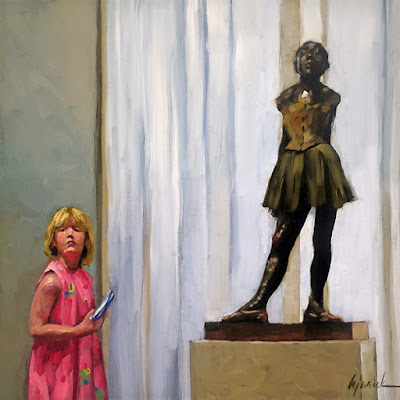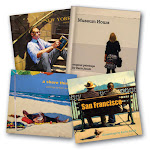5 x 7"
oil on panel
sold
sold
I'm planning out an upcoming solo show that will feature the ladies of the art world. Not so much the artists but the portrayals of women through the ages. One that first came to mind on my now-long list of possibilities was Edward Hopper's Chop Suey - which, by the way, just broke a record in a Christie's art auction. Painted in 1929, Chop Suey became the most expensive work of pre-war American art, selling for nearly $92 million.
Chop Suey is quintessential Hopper for a couple of reasons. Hopper loved the spaces of restaurants, not so much the food - hence, the empty table except for the teapot. Hopper was famously uninterested in food and known to eat his meals right out of a can. Chop Suey restaurants were the rage in the 1920's, mostly frequented by young, working-class women dining together. Another usual subject matter of Hopper's. He and his wife went to this particular restaurant often, The Far East Tea Garden, once located in the Upper West side of Manhattan, no longer there. Hopper's wife posed for all three of the women figures in the painting, also a usual habit.
Fun fact - Chop Suey means 'odds and ends' in Cantonese.











































